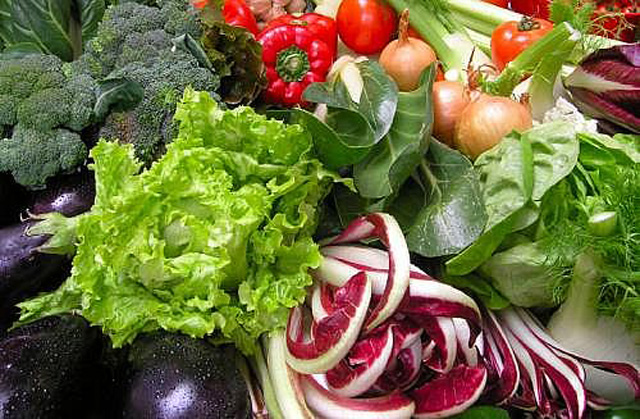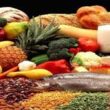Your metabolism can be one of the crucial deciding factors in successful weight loss, and it seems like one that is very much out of your control. This thinking can lead to a kind of desperation that drives people to try all kinds of dangerous stimulants and unnecessary supplements to try and unnaturally coax the body into revving up metabolism and burning fat. The downside to this is that when you choose this route, your overall health suffers. The point of losing weight in the first place is to improve your quality of life, so this becomes self-defeating. A better way is to examine natural, simple ways you can boost metabolism for the results you’re looking for. Metabolism can be affected by a lot of your habits and lifestyle factors, and learning to work with your bodily processes rather than against them can help you achieve your goals of living a healthy, fit lifestyle.
15) Chew Your Food Well
Everyone is very used to rushing through things, including meals. There is never enough time in the day, and so you may find yourself taking it out of what is supposed to be the leisurely affair of eating in order to fuel your next spurt of activity. That’s not a good way to redeem the time, though, because it does more harm than good. Eating too quickly not only can cause you to intake more air than necessary, leading to gas and bloating, but it can harm your metabolism if you aren’t chewing your food well enough. Digestion begins in the mouth, with the tongue and teeth mechanically breaking down food, and the saliva chemically processing food stuffs to soften them for the gut to finish digesting. Not chewing your food enough means half-processed products are making it to the stomach which isn’t equipped to handle digestion on that level. Partially chewed food takes much longer to digest, sits in the GI tract longer, and takes much more work to process. Rather than burning more calories – as most cellular work does – this only encourages the digestive system to slow down and the metabolism to move more slowly as a result.
14) Get Enough Calcium
If you want to get slim, it’s time to wear a milk mustache. You already know calcium is important for healthy bone density and strong teeth. The mineral is also a possible cancer fighter, and an important neurochemical for the brain as well as a signal ion for muscles. Studies published by the National Institute for Health also indicated calcium — as that found in low-fat dairy products — can be a proponent in weight loss, boosting the metabolism and helping to zap fat reserves, particularly those around the middle trunk area. Belly fat is a common complaint among those trying to slim down, and it can be some of the most dangerous weight to carry, correlated with a number of health problems like heart disease and diabetes.
Studies are still in the works to determine exactly how calcium revs up metabolism, but the fact that it is now a proven fat burner indicates the connection is there to be found. In the meantime, you can take advantage of the latest research by reaching for a glass of skim milk, a slice of low fat cheese, or even a cup of a variety of dark leafy green vegetables that contain high amounts of calcium — in addition to many other desirable nutrients. Worried you’re not maximizing your calcium intake in your diet? Experts agree that most adults, and especially women, could benefit from the addition of a calcium supplement as well.
13) Eat More Berries
Acai and goji berries have gotten the most press for their touted health benefits, but you may be able to find humbler berries in your backyard that serve the same purpose. Berries are rich in ellagic acid, anthocyanins, and quercetin — among other antioxidant compounds — that have immune supporting and cancer-fighting properties as they protect you against cellular damage. In fact, overall, berries have the highest antioxidant levels of any other plant part, including spinach leaves. Berries are also high in dietary fiber and phytochemicals that improve the digestive system by helping push food through and cleanse the tract as they go.
Berries rev up the metabolism by giving your body a quick jolt of sugars, but also a longer sustenance of more complex plant starches at the same time. Their acids encourage speedy digestions and fire up your metabolism, as well as being a snack or dessert able to satisfy your appetite and keep it below your metabolic level, helping you lose weight. Berries are also high in vitamin C — strawberries boasting 150 percent your daily recommended intake of vitamin C in just one serving. While it’s indirect, vitamin C does support the immune system, and a healthier you will have a more robust metabolism as well.
12) Avoid Processed Foods
Not only can your body work too hard to digest foods, it can work too little as well. When your diet is mostly processed foods, the simple starches and sugars break down too easily and give your body a rush of energy it must either utilize or store. The metabolism slows, much like a line foreman might halt production if workers down the line were feeling overwhelmed, to deal with the “packaging” of this energy which turns to fat if not burned immediately. This is one reason low-fat diets of the past don’t work well, because they rely on quickly digestible carbohydrates.
Eating whole foods is more than a fad. Studies out of Harvard, among other institutions, have proven that it’s not just the amount of calories that matter in weight loss and metabolism, nor the percentage sources of those calories. The quality of your food intake matters the most. Carbohydrates in and of themselves aren’t bad, and other sources of calories aren’t automatically good. Lean proteins, complex carbohydrates, and clean fats all taken from as close to the source as you can get will give you the best metabolic results, using the most energy to digest in a way that will rev your body up to take on the challenge, not slow down.
11) Drink Green Tea
Green tea has been highly prized for several health benefits for centuries. Recently, modern science has supported many of these functions, indicating the antioxidants and tannins found in green tea boosts your immune system, cleans your cardiovascular system, and may fight certain cancers. Green tea also appears to have thermogenic properties that speed fat oxidation, which allows these reserves to be utilized for energy. While the provable benefits to it revving up your system seem to be small, even a minor percentage can help when used in conjunction with other metabolism busting tips.
Another added benefit to green tea in terms of metabolism is the fact that — unless cut with fatty dairy or a lot of sugar — green tea is calorie free and low in caffeine. The small energy shot can quell appetites until meal time, and fulfill the need for a refreshing morning drink that is far healthier for your waistline and sleeping patterns than coffee, particularly the latte and cappuccino variety that are more loaded calorically than most of your desserts.
10) Eat More Vegetables
Vegetables contain many needed nutrients whose fulfillment in the body leads to satisfaction, and so a reduced appetite that is in keeping with your metabolism. Vegetables are usually very bulky, giving you the same volume of food you would eat normally, but with far fewer calories. Being able to stay fuller on fewer calories and feeling the need to eat fewer to begin with are both staple tactics for weight-loss. Also, just like with berries, the fiber in vegetables supports a clean and healthy digestive track that is ready to work.
Myths abound about some vegetables being “negative calories” foods, or their tough texture — courtesy of cellulose — causing you to burn more calories chewing them than you gain by eating them. This isn’t true, unfortunately, and there is no magic veggie that will let you shed the pounds without examining your entire lifestyle. Instead, to get the maximum benefit from eating vegetables, go for a variety. A varied diet keeps the metabolism pumping, as it provides you all the many nutrients you need, and doesn’t allow your system to develop its own lazy habits being too used to one kind of food. One rule of thumb is to get as many colors as you can on your plate at any given meal. Dark leafy greens like kale, spinach and broccoli, red tomatoes, yellow corn, orange carrots, and even white cauliflower can produce a rainbow at your dinner table that celebrates you being one step closer to an active metabolism and healthy life.
9) Eat Raw Foods
Some raw foods are more difficult to digest, but many more aren’t. Also, many raw foods contain nutrients that are delicate enough to break down or leach away with many common cooking practices. Many have a crisp and refreshing texture that satisfies us with a smaller volume of food than something soft and easy to eat. Vegetables in particular will give you the best benefit of their fiber and vitamins when they’re eaten raw by themselves or in a salad with a light dressing.
Other raw foods to enjoy are some seeds, nuts, and many fruits. Some swear by raw dairy products to obtain some of the natural bacterial cultures that are destroyed in pasteurizing, but this can also be a dangerous practice if such dairy products are improperly stored and allowed to develop less beneficial bacteria. Raw sugar is also used sometimes, but is a process of rendering sugarcane no matter what form it is in, so there is little benefit there. Raw honey, however, has a maximized amount of immune support and its own cultures, and in this form, can be a good sugar substitute as its high sweetness makes it less necessary to fulfill your cravings for a taste of sugar in a way that can boost your metabolism instead of just your appetite like table sugar does.
8) Eat Spicy Foods
In particular, peppers contain capsaicin, a colorless compound that causes the sensation of heat on your taste buds with a chemical reaction. Capsaicin also has a thermogenic effect on the rest of your body as well; sometimes inducing sweating and making your temperature feel elevated. On a cellular level, a study at Bowling Green State University found that this same process also ramps up the metabolism as well, with participants who ate spicy peppers in their foods burning an average of eight percent more calories per meal than participants who did not have spicy peppers in their food.
Another effect of spicy foods is that strong, flavorful foods leave you feeling satiated much faster than bland foods. Eating spicy foods like peppers can help you consume up to 200 calories fewer per meal than you would with blander foods, and so the combined effects of spicy foods on metabolism and appetite make them powerful fat-burning allies for you. Other foods that contain these same effects are black pepper and ginger, both of which have similar compounds in them that induce that kind of tingling burn you either love or hate. Finally, phytochemicals like capsaicin have been tentatively linked to helping lower the instances of certain cancers, and while not a metabolic effect, is certainly another healthy reason to spice up your life.












